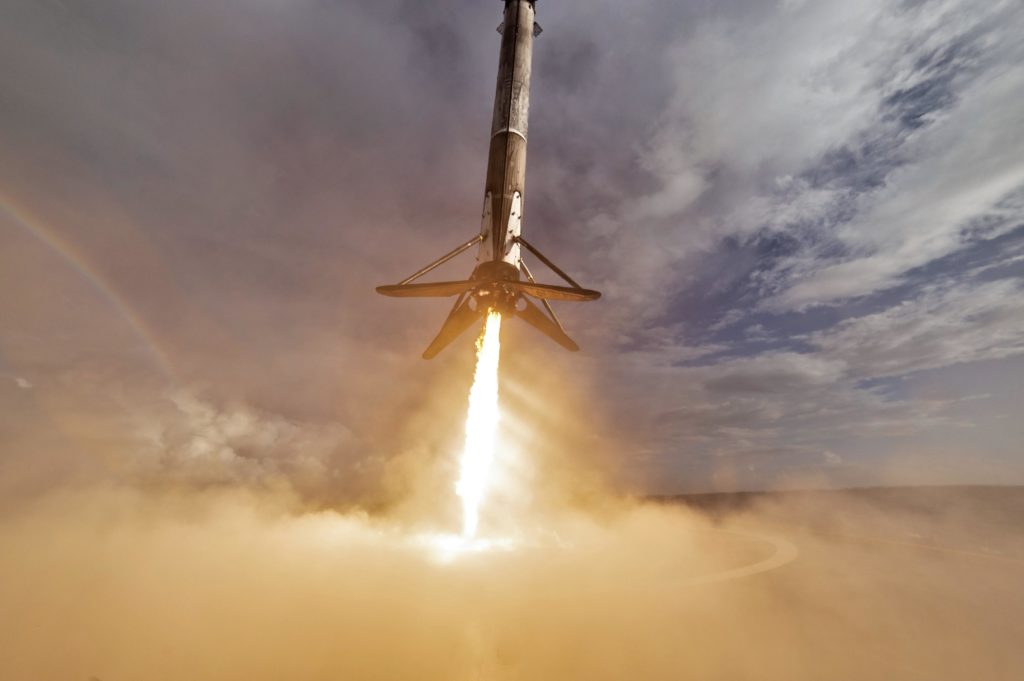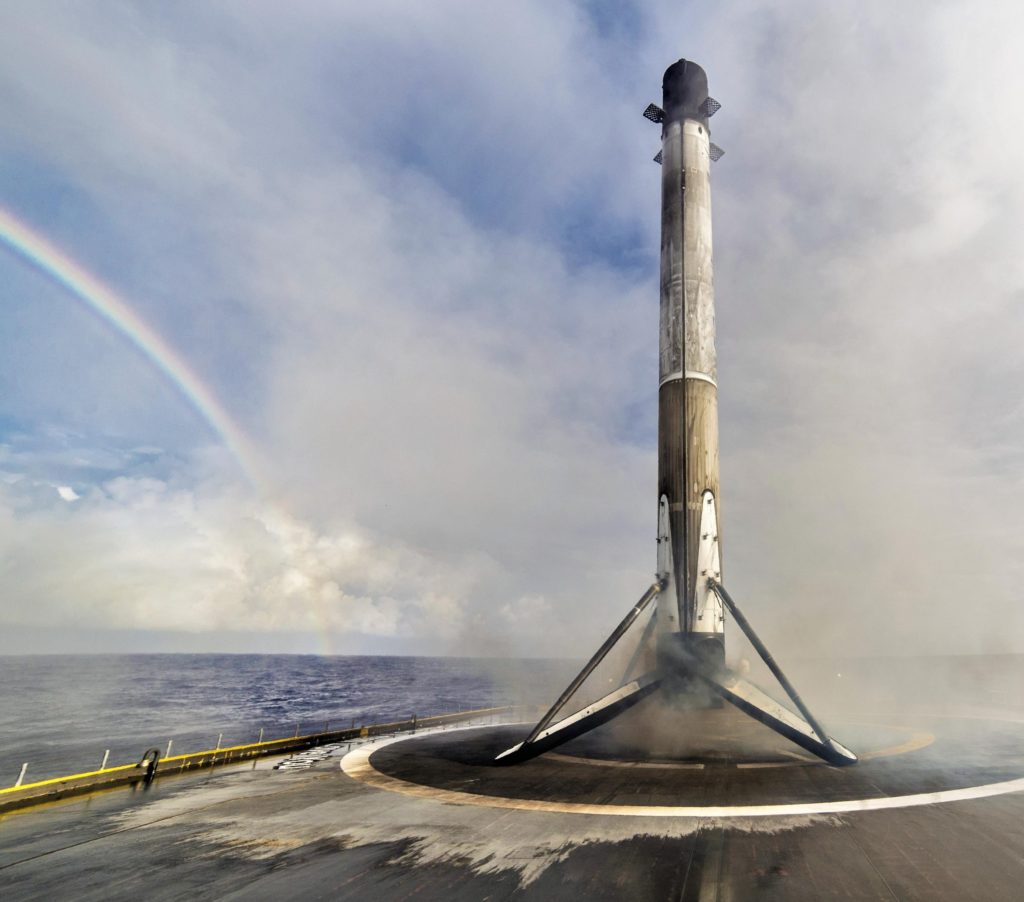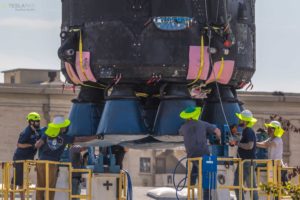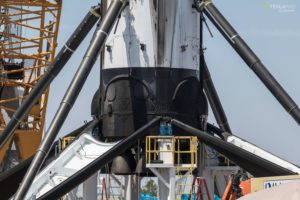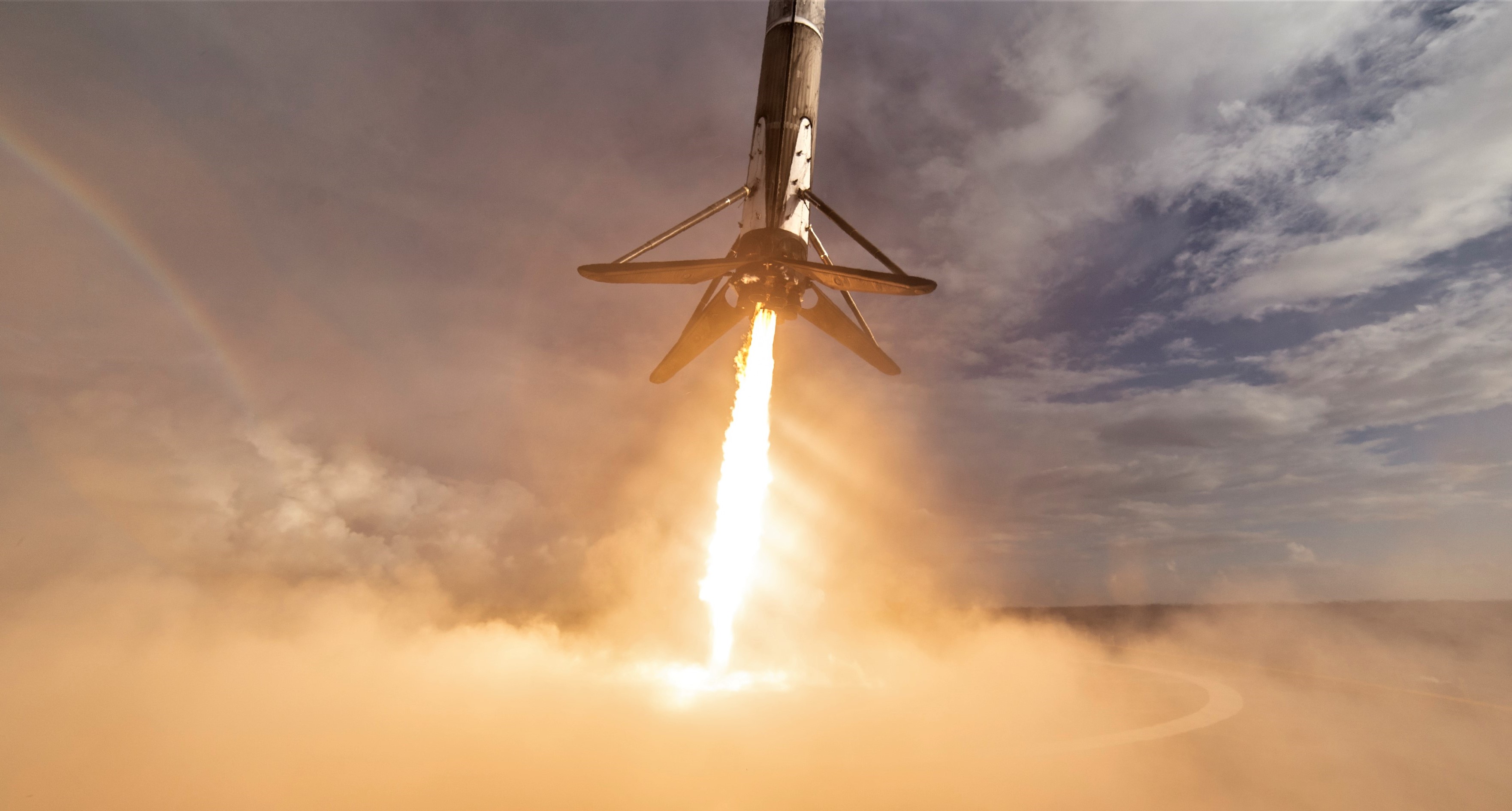

News
Follow a SpaceX Falcon 9 Block 5 booster recovery from start to finish [video]
All major aspects of SpaceX’s most recent Falcon 9 Block 5 booster recovery have been documented from start to finish, offering a solid glimpse into the work that actually goes into getting a rocket booster from the deck of a SpaceX drone ship to one of the company’s many hangars for inspections, repairs, and refurbishment.
Filmed by USLaunchReport, a SpaceX-focused nonprofit staffed by U.S. veterans, the group’s coverage of a variety of SpaceX events may not always offer the highest production quality, but the sheer tenacity and patience of those behind the cameras allow them to capture unique and interesting events that almost nobody else is keen to wait around for.
SpaceX Falcon 9 Block 5 booster sails into port aboard droneship OCISLY after successful reusehttps://t.co/zQtidwzvhp
— TESLARATI (@Teslarati) November 21, 2018
Over the course of four videos focused on SpaceX’s recovery of Falcon 9 Block 5 booster B1047, USLaunchReport offered good views of four major events that occur during all rocket recovery operations: the drone ship’s return to port, Falcon 9’s move from ship to shore, the booster’s landing leg removal (or retraction), and the booster’s transfer from a vertical to horizontal orientation and transport by road back to a SpaceX hangar.
Of Course I Still Love You arrives at Port Canaveral
As with all of Falcon 9’s drone ship landings, B1047 came to a rest on a station-keeping OCISLY several hundred miles east of the Florida coast, coincidentally landing directly in front of a giant rainbow cued by rain clouds, both visible in the background. In theory, B1047’s second landing should by no means be the rocket’s last: if Falcon 9 Block 5’s first stage upgrades are as successful as they hoped to be, the rocket could well see a productive life of 100 launches or more between now and BFR’s complete takeover.
- Falcon 9 B1047 approaches its second successful landing aboard OCISLY. (SpaceX)
- In a more perfect world, Falcon 9 would have been responsible for the rainbow. (SpaceX)
For at least the next 5-10 years, however, SpaceX followers will continue to be treated to spectacular Falcon 9 and Falcon Heavy booster recoveries, particularly the moment when each booster sails through the narrow mouth of Port Canaveral or Port of Los Angeles, offering spectators almost unbeatable views of just-landed SpaceX rockets.
SpaceX – Last Ten Miles To Dock.
Next Men at Work. B1047.2 https://t.co/6C4YDhUpJ6— Mike Wagner (@USLaunchReport) November 21, 2018
Falcon 9’s lift from ship to shore
Soon after the drone ship docks in port, SpaceX recovery technicians install a brace and lifting jig that attaches to Falcon 9’s booster interstage, using the same mechanisms that connect the first stage to the second stage prior to stage separation. The interstage’s mechanical actuators are strong enough to support – at a minimum – the entire weight of an empty Falcon 9 booster, allowing SpaceX to simply attach the jig and lift Falcon 9 off of the drone ship with any number of large but commercially available cranes.
Rather than directly lowering the rocket and allowing it to rest directly on its landing legs again, SpaceX technicians make use of a custom-built stand that acts as a sort of barebones, static replica of the mounts Falcon 9s are attached to at SpaceX launch pads. Structurally optimized to allow Falcon 9 and Heavy to be held down on the launch pad while operating at full thrust, a series of four solid-metal attachment points interface with those hold-down clamps, attach to Falcon 9’s four landing legs, and offer an easily accessible and structurally sound method of sitting a booster upright (sans legs) and maneuvering it during recovery operations.
- An excellent look at Block 5 booster B1048’s aft, showing off two of four launch clamp attachment points. (Pauline Acalin)
- A view of Falcon 9 resting on said clamp attach points. (Pauline Acalin)
Once Falcon 9 is sat stably atop its recovery stand, SpaceX technicians remove the rocket’s four landing legs and their associated telescoping deployment assemblies. While SpaceX has recently begun to attempt the in-situ retraction and stowage of Falcon 9 landing legs once returned to land, a number of experimental retraction attempts appear to have produced less than satisfactory results. This time around, the retraction jig was visibly stripped and SpaceX technicians did not attempt any leg retractions. However, those recovery technicians are now so experienced and familiar with the optimized procedures that Falcon 9 booster can go from port arrival to horizontal transport to a SpaceX hangar in just a little over 48 hours, and that trend continued with B1047.2.
Good observations by @USLaunchReport. The lifting cap was stripped of the leg retraction hardware, so SpaceX is presumably changing the design of the retraction system.https://t.co/WRwLNbLKqF
— Michael Baylor (@MichaelBaylor_) November 23, 2018
From | to __
Although Falcon 9 and Heavy rockets come into their prime once vertical, the rockets spend the vast majority of their lives horizontal, either in transport from facility to facility or stationary inside a SpaceX hangar, awaiting launch, undergoing integration, or being refurbished. Translating Falcon 9’s massive ~30-ton, 135-foot-tall (41m) booster from vertical to horizontal is a feat within itself, requiring the coordinated use of two large cranes, multiple technicians with guidelines, and one of several giant booster transport jigs owned by SpaceX.
SpaceX’s seasoned recovery technicians make it look easy, but the reality is in almost polar opposition. The fact that Falcon 9’s structure is built primarily of aluminum-lithium alloy tanks with walls maybe half a centimeter (~5 mm) thick certainly doesn’t make this process any easier, as even the slightest misstep or tank depressurization (Falcon 9 is almost always pressurized with nitrogen when horizontal) could structurally compromise the rocket and result in irreparable damage.
The cherry on top
A reliable crowdpleaser, the last critical step in any Falcon 9 or Falcon Heavy recovery is the booster’s careful transport – by road – from its port of call (or landing zone) to a dedicated SpaceX hangar (or factory), where the rocket can be far more thoroughly inspected, repaired, and maintained between launches. With Falcon 9 Block 5’s May 2018 introduction, the latter segment has become more important than ever before, as the upgraded rockets are already routinely conducting launches with as few as three months between them, bringing SpaceX closer than ever before to realizing a long-term aspiration of operating a fleet of rapidly and (relatively) easily reusable orbital-class rockets.
Often slowly driving just a few dozen feet from passing bystanders and traffic, this short few-mile trip from Port Canaveral to either Kennedy Space Center (KSC) or Cape Canaveral Air Force Station (CCAFS) is typically done with Falcon 9 boosters entirely uncovered, aside from nine small booties that cover their nine Merlin 1D engines. Without unique and easily missed moments like this, it might well be just shy of impossible to get fewer than several hundred feet away from an operational SpaceX rocket, certainly a luxury but one that would still be sorely missed.
All things considered, the crew at USLaunchReport ought to be thanked for their relentless patience and commitment to getting the shot. For those of us who mean to resist the tendency for SpaceX’s sheer inertia to rapidly make the extraordinary all but mundane, these long, highly detailed, and often esoteric videos will (hopefully) never get old.
For prompt updates, on-the-ground perspectives, and unique glimpses of SpaceX’s rocket recovery fleet check out our brand new LaunchPad and LandingZone newsletters!
News
Tesla begins Robotaxi certification push in Arizona: report
Tesla seems serious about expanding its Robotaxi service to several states in the coming months.

Tesla has initiated discussions with Arizona transportation regulators to certify its driverless Robotaxi service in the state, as per a recent report from Bloomberg News. The move follows Tesla’s launch of its Robotaxi pilot program in Austin, Texas, as well as CEO Elon Musk’s recent comments about the service’s expansion in the Bay Area.
The Arizona Department of Transportation confirmed to Bloomberg that Tesla has reached out to begin the certification process for autonomous ride-sharing operations in the state. While details remain limited, the outreach suggests that Tesla is serious about expanding its driverless Robotaxi service to several territories in the coming months.
The Arizona development comes as Tesla prepares to expand its service area in Austin this weekend, as per CEO Elon Musk in a post on X. Musk also stated that Tesla is targeting the San Francisco Bay Area as its next major market, with a potential launch “in a month or two,” pending regulatory approvals.
Tesla first launched its autonomous ride-hailing program on June 22 in Austin with a small fleet of Model Y vehicles, accompanied by a Tesla employee in the passenger seat to monitor safety. While still classified as a test, Musk has said the program will expand to about 1,000 vehicles in the coming months. Tesla will later upgrade its Robotaxi fleet with the Cyercab, a two-seater that is designed without a steering wheel.
Sightings of Cybercab castings around the Giga Texas complex suggests that Tesla may be ramping the initial trial production of the self-driving two-seater. Tesla, for its part, has noted in the past that volume production of the Cybercab is expected to start sometime next year.
In California, Tesla has already applied for a transportation charter-party carrier permit from the state’s Public Utilities Commission. The company is reportedly taking a phased approach to operating in California, with the Robotaxi service starting with pre-arranged rides for employees in vehicles with safety drivers.
News
Tesla sets November 6 date for 2025 Annual Shareholder Meeting
The automaker announced the date on Thursday in a Form 8-K.

Tesla has scheduled its 2025 annual shareholder meeting for November 6, addressing investor concerns that the company was nearing a legal deadline to hold the event.
The automaker announced the date on Thursday in a Form 8-K submitted to the United States Securities and Exchange Commission (SEC). The company also listed a new proposal submission deadline of July 31 for items to be included in the proxy statement.
Tesla’s announcement followed calls from a group of 27 shareholders, including the leaders of large public pension funds, which urged Tesla’s board to formally set the meeting date, as noted in a report from The Wall Street Journal.
The group noted that under Texas law, where Tesla is now incorporated, companies must hold annual meetings within 13 months of the last one if requested by shareholders. Tesla’s previous annual shareholder meeting was held on June 13, 2024, which placed the July 13 deadline in focus.
Tesla originally stated in its 2024 annual report that it would file its proxy statement by the end of April. However, an amended filing on April 30 indicated that the Board of Directors had not yet finalized a meeting date, at least at the time.
The April filing also confirmed that Tesla’s board had formed a special committee to evaluate certain matters related to CEO Elon Musk’s compensation plan. Musk’s CEO performance award remains at the center of a lengthy legal dispute in Delaware, Tesla’s former state of incorporation.
Due to the aftermath of Musk’s legal dispute about his compensation plan in Delaware, he has not been paid for his work at Tesla for several years. Musk, for his part, has noted that he is more concerned about his voting stake in Tesla than his actual salary.
At last year’s annual meeting, TSLA shareholders voted to reapprove Elon Musk’s compensation plan and ratified Tesla’s decision to relocate its legal domicile from Delaware to Texas.
Elon Musk
Grok coming to Tesla vehicles next week “at the latest:” Elon Musk
Grok’s rollout to Tesla vehicles is expected to begin next week at the latest.

Elon Musk announced on Thursday that Grok, the large language model developed by his startup xAI, will soon be available in Tesla vehicles. Grok’s rollout to Tesla vehicles is expected to begin next week at the latest, further deepening the ties between the two Elon Musk-led companies.
Tesla–xAI synergy
Musk confirmed the news on X shortly after livestreaming the release of Grok 4, xAI’s latest large language model. “Grok is coming to Tesla vehicles very soon. Next week at the latest,” Musk wrote in a post on social media platform X.
During the livestream, Musk and several members of the xAI team highlighted several upgrades to Grok 4’s voice capabilities and performance metrics, positioning the LLM as competitive with top-tier models from OpenAI and Google.
The in-vehicle integration of Grok marks a new chapter in Tesla’s AI development. While Tesla has long relied on in-house systems for autonomous driving and energy optimization, Grok’s integration would introduce conversational AI directly into its vehicles’ user experience. This integration could potentially improve customer interaction inside Tesla vehicles.
xAI and Tesla’s collaborative footprint
Grok’s upcoming rollout to Tesla vehicles adds to a growing business relationship between Tesla and xAI. Earlier this year, Tesla disclosed that it generated $198.3 million in revenue from commercial, consulting, and support agreements with xAI, as noted in a report from Bloomberg News. A large portion of that amount, however, came from the sale of Megapack energy storage systems to the artificial intelligence startup.
In July 2023, Musk polled X users about whether Tesla should invest $5 billion in xAI. While no formal investment has been made so far, 68% of poll participants voted yes, and Musk has since stated that the idea would be discussed with Tesla’s board.
-

 Elon Musk1 week ago
Elon Musk1 week agoTesla investors will be shocked by Jim Cramer’s latest assessment
-

 Elon Musk19 hours ago
Elon Musk19 hours agoxAI launches Grok 4 with new $300/month SuperGrok Heavy subscription
-

 Elon Musk3 days ago
Elon Musk3 days agoElon Musk confirms Grok 4 launch on July 9 with livestream event
-

 News7 days ago
News7 days agoTesla Model 3 ranks as the safest new car in Europe for 2025, per Euro NCAP tests
-

 Elon Musk2 weeks ago
Elon Musk2 weeks agoA Tesla just delivered itself to a customer autonomously, Elon Musk confirms
-

 Elon Musk1 week ago
Elon Musk1 week agoxAI’s Memphis data center receives air permit despite community criticism
-

 Elon Musk2 weeks ago
Elon Musk2 weeks agoTesla’s Omead Afshar, known as Elon Musk’s right-hand man, leaves company: reports
-

 News2 weeks ago
News2 weeks agoXiaomi CEO congratulates Tesla on first FSD delivery: “We have to continue learning!”

